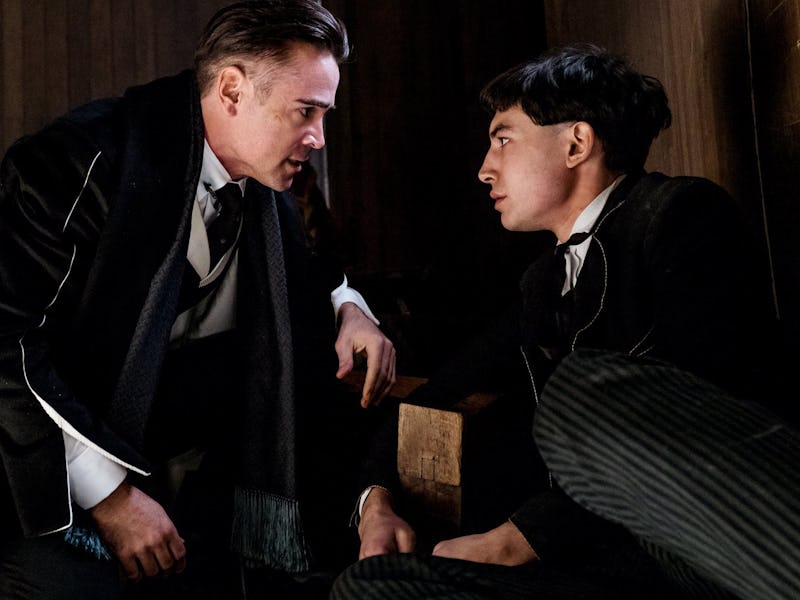Everything to Know About Grindelwald in 'Fantastic Beasts'
Everything you need to know about Gellert Grindelwald.

Voldemort might not be around yet in Fantastic Beasts and Where to Find Them’s Prohibition-era New York, but the Harry Potter prequel still has a formidable villain. Muggles, if you haven’t seen the film yet and don’t want spoilers, turn back now.
In its final twist, Fantastic Beasts reveals that the dark wizard Gellert Grindelwald was hiding in plain sight the entire time, much in the same way Barty Crouch Jr. did in Goblet of Fire. If you hadn’t cracked the spine of a Potter book in a while, your reaction to the news was probably a big “huh?” or else a, “Damn it, why is Johnny Depp even in this movie?”
While we can’t help you with the second question, we can certainly address the first. Before Voldemort, the most feared figure in the Wizarding world was Gellert Grindelwald. At the beginning of his career, Dumbledore was his right hand man; the Bellatrix Lestrange to his Voldemort. The two met as teens in Godric’s Hollow, conspiring over a mutual obsession with the Deathly Hallows. Their goal was to lift the International Statute of Secrecy so that Wizards could reveal their existence to Muggles and dominate them “for the greater good.”
That’s why Grindelwald appropriates the sign of the Hallows as his own symbol. Recall that in Harry Potter and the Deathly Hallows, Luna’s father wears the symbol to Bill and Fleur’s wedding.
Although Victor Krum does not appear in the film, in the book, he reacts negatively to Xenophilius Lovegood because he associates the symbol with Grindelwald. But it was the Master of Death part of the Hallows that enticed Dumbledore.
As he explains to Harry in the Deathly Hallows purgatory sequence,
It was the thing, above all, that drew us together. Two clever, arrogant boys with a shared obsession. You cannot imagine how his ideas caught me, Harry, inflamed me. Muggles forced into subservience. We wizards triumphant. Grindelwald and I, the glorious young leaders of the revolution.
The two had a falling out after the death of Dumbledore’s sister — another event highly relevant to Fantastic Beasts. But curiously, Dumbledore still waited over twenty years to stop his friend and former love’s reign of terror. Beasts is set in 1926; Dumbledore defeats Grindelwald in 1945.
When Dumbledore shows up in the Fantastic Beasts sequel, then, we can expect him to be seriously conflicted, burdened with guilt for Grindelwald’s bloody reign. He helped construct his “for the greater good” motto, after all. Though he’s the only one who can defeat Grindelwald, he’s currently paralyzed by his feelings for the wizard.
That conflict makes for a hell of a story, and director David Yates has already hinted that going forward, it will be more important than Newt’s story.
Credence and the wizard formerly known as Grindelwald
Grindelwald was not exactly transparent about his motives in Beasts, but we know that he’s interested in Obscurials, perhaps hoping to harness and control their explosive magic. We can also surmise that he choose New York — a city with an unusually strict division between its wizard and Muggle communities — as part of his goal to assert Wizard supremacy.
Although it’s hard to say what role he will play in the next movie, we know how his story ends. As Dumbledore tells Harry, “I delayed meeting him until finally, it would have been too shameful to resist any longer. People were dying and he seemed unstoppable, and I had to do what I could.”
Because we already know its ending, then, Grindelwald’s story follows the same path as Harry’s self-discovery in Deathly Hallows: It opens at the close.